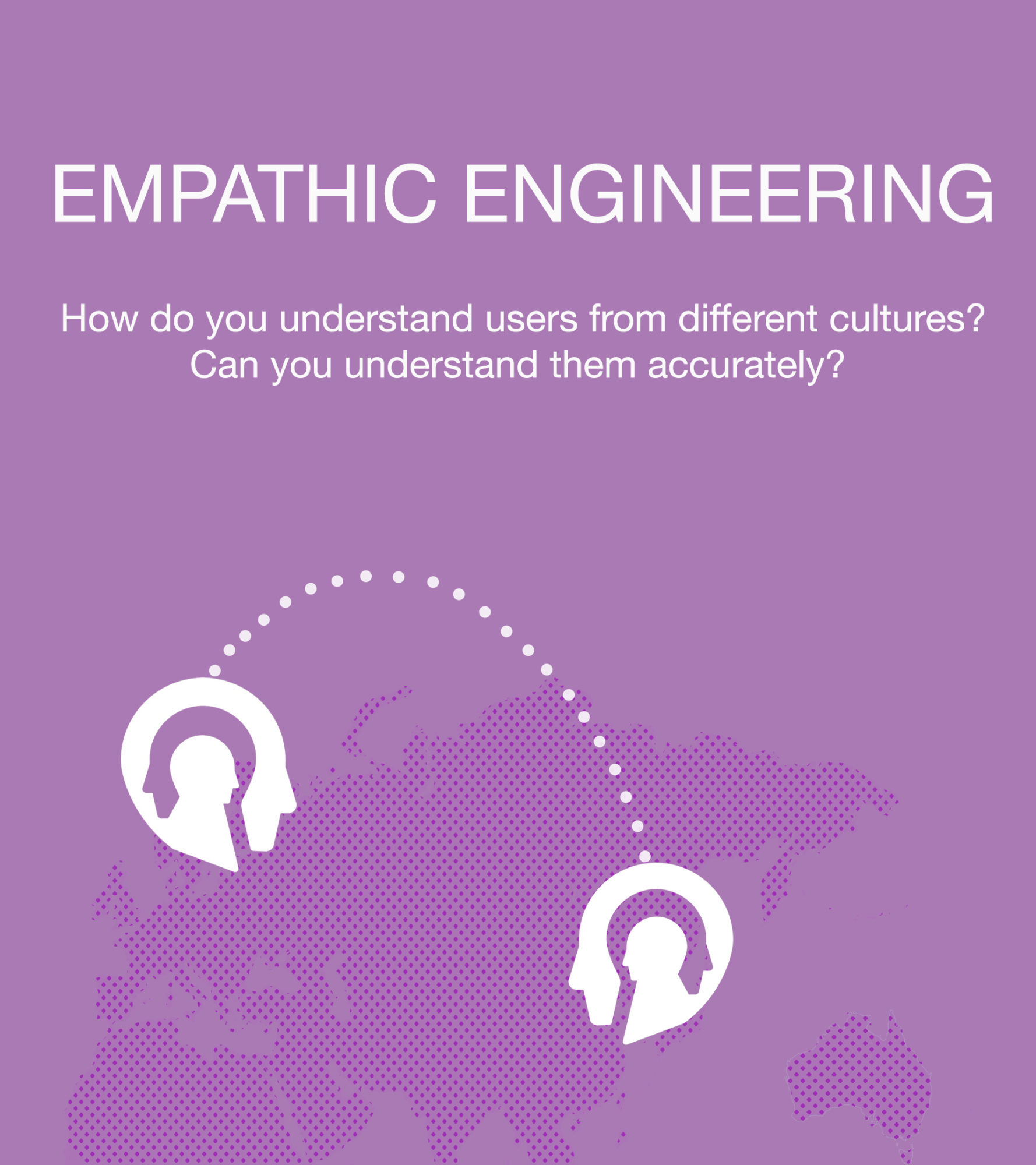In the global economic integration, we do not design products only for local users but for users all over the world. Successful product development depends on how well meet the customer need, how well we understand the users. The diversity of users leads to a diversity of needs. Think about a design task: How to help drivers all over the world to improve their driving safety. Driving is a personal activity and drivers’ experience and needs differ from person to person. When they are from different countries, the difference of driving experience can be even larger due to various traffic rules, road conditions, habits of pedestrians and other road users, weather and so on. How could we understand and fulfill the needs of drivers from different countries? How could we meet their expectations in a global competition and provide them better products?
When understanding users, including those from different cultural backgrounds, empathy is a way to help to gain deeper understanding by (Kouprie & Visser, 2009):
- Inspiring designers’ curiosity so they have willingness to understand users who are different due to various cultural backgrounds (Discovery);
- Providing designers a way to think from the user’s perspective and expand the designers’ knowledge horizon (Immersion);
- Enabling designers to recall their own experiences and connecting it with users to create an understanding (Connection);
- Inspiring designers to create new ideas and insights based on their new user understanding (Detachment).
In empathic design, cultural difference influences how a person empathize with another and how the person communicates with others. In psychology, cultural difference has been shown to impact a person’s response to another person’s pain, empathic concern and the accuracy of empathic understanding. In design, culture difference is likely to shape user understanding in cross-cultural design. We assume that it is more difficult for designers to understand users from different cultures than understanding local users, but how much more difficult?
To test this and understand the role of cultural differences on designers’ empathic understanding, we conducted interviews with drivers both in China and Finland, and invited designers who are from Finland, China and other western countries to understand Chinese and Finnish drivers. Unsurprisingly, the average empathic accuracy of understanding drivers from the same national culture is higher than if they are from a different national culture. The empathic accuracy is 32% when the user and designer are from the same culture. This accuracy decreases to 22% when understanding drivers from a different national culture.
For example, what types of dangers are expected on the roads and how severe they are can be experienced and understood very differently by people from different national cultures. Also hidden unvoiced aspects such as not really trusting the proposed technology, while not saying it directly, is much easier understood by a person from the same national culture.
A positive note for design practice is that, we find that visiting the user’s country significantly helps designers to achieve a more accurate empathic understanding. Even a short-term business trip improves empathic accuracy significantly.
Read the full paper here: https://doi.org/10.1080/09544828.2021.1928022
 Aalto DF
Aalto DF